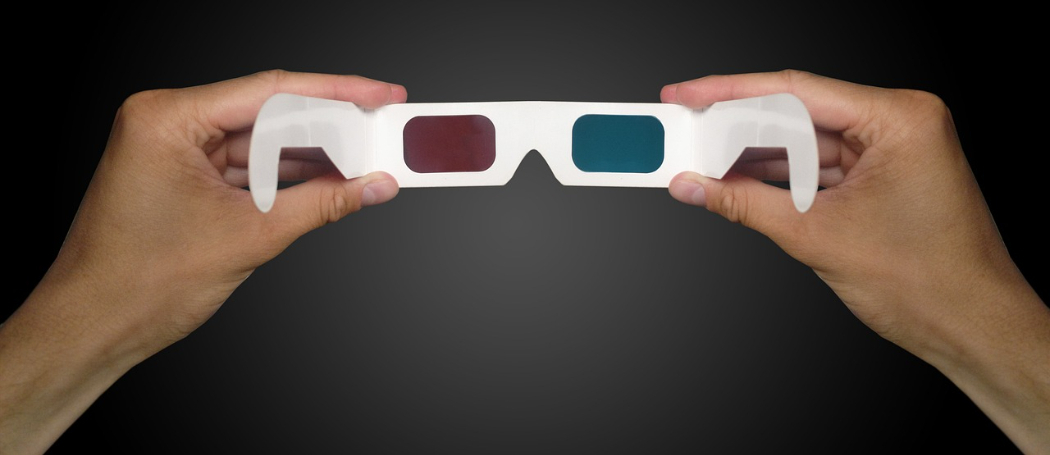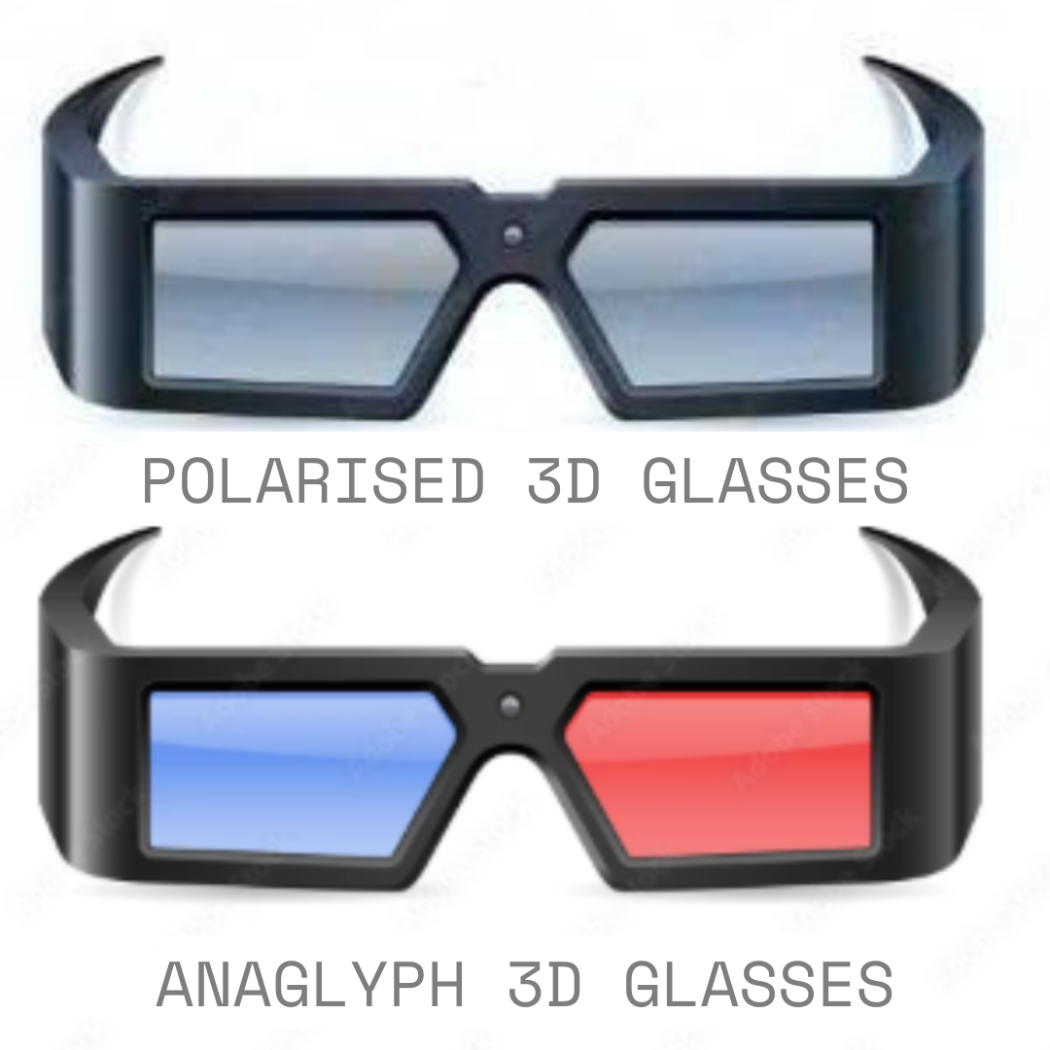Stereo Glasses Explained: Types, Uses & Best Buying Guide for 2025
Unlock 3D magic with Stereo Glasses. Explore depth, history, and immersive experiences.

Stereo glasses are also known as 3D glasses. It allows the viewer to create depth in 2D visuals by conveying slightly different images to each eye. This stereoscopic effect reproduces natural human vision.
Whether you're a tech enthusiast or casual viewer, keep an eye on how 3D glasses enhance the captivating experiences in 2025 and understand the concept of stereoscopic and 3D vision. How to choose the best models for movies, gaming, VR (Virtual Reality), and more.
What Are Stereo Glasses?
Stereo glasses are specialised eyewear used to perceive depth in a 2D image. They used a technique that allows the brain to merge an image into a single 3D visual experience by presenting each eye with a minimally offset image.
Stereo Displays
Stereo displays are referred to as 3D systems that deliver depth by transmitting separate images to each eye. These systems are required for glasses to separate the views(left and right) of each eye.
Common Technologies:
- Polarised Glasses:
These are used in IMAX 3D and retain full colour while separating images. - Anaglyph Glasses:
To split the visual input by eye, it uses colour filters (e.g., red/cyan). But this may reduce colour accuracy.
Stereo Blindness?
A common condition known as stereo-blindness among people, in which approximately 5% cannot perceive the 3D effect due to the lack of stereovision.
It’s often caused by:
- Loss of vision in one’s eye.
- Misalignment or the brain’s inability to focus both eyes correctly.
These rare people can only see plain images. For those, 3D glasses are ineffective.
Types of Stereo Glasses:
Choose the right option between active and passive 3D glasses. These depend on your device and use case:
- Active Glasses: Feature LCD shutters that sync with the screen to alternate images between eyes.
- Passive Glasses: Use polarisation or colour filtering to deliver 3D effects.

Stereoscopic vs 3D Visualisation
Some people are confused about these different concepts. Though often used alternately, stereoscopic and 3D visualisation differ in scope.
- Stereoscopic
It’s a concept of imaging that creates depth by showing two stereoscopic image pairs, transforming them into one vision for each eye, and mimicking natural vision. - 3D Visualisation
It is a broader term that includes and is interchangeably involved with the concepts of stereoscopy, holography, and autostereoscopic displays.
Aspect | Stereoscopic | 3D visualisation |
Definition | Uses two images to simulate depth | Covers all tech that adds more advanced depth to visuals |
Viewing | Needs glasses or headsets | May be glasses-free or require advanced setups |
Examples | VR(Virtual Reality), 3D movies, polarised glasses | Holograms, AR (Augmented Reality), volumetric displays |
A Brief Record of Stereo Glasses
Over time, the technology has evolved. In the early 1800s, the beginning of stereoscopic vision dates back to it:
- Early 1800s:
Stereoscopes were first introduced with the binocular submersible. - Mid-20th Century:
Anaglyph glasses with red and cyan lenses became common at that time. - Later Innovations:
Polarised lenses for cinema and active shutter glasses for TVs(movies, dramas or sports) and gaming.
- Modern Day:
Smart integration into VR(Virtual Reality) headsets and advanced applications across industries.
The Science Behind 3D Vision
Let’s grasp that the stereo glasses innovation begins with the concept of binocular or stereoscopic vision. Stereo glasses simulate this process:
- Both Eye Views:
Each lens presents a minimally altered image from a different angle to the brain. - Neuro Perception:
The brain combines both views to create a single three-dimensional scene to see.
Applications of Stereo Glasses
1. Movies and Entertainment
You can bring captivating scenes to your life with stereo glasses. It can elevate cinemas by making characters and scenes that are manifesting jump off the screen. Notable 3D films include Avatar, The Avengers, and Jurassic World.
2. Virtual Reality (VR)
VR headsets use stereo vision to engage users in digital environments. It is useful not just in gaming, but also in education, architecture, and healthcare departments.%20Headset.jpg)
3. Gaming
Interactive gameplay becomes adorably possible with stereo glasses. Popular 3D-enabled environments include titles such as Resident Evil 7 and The Legend of Zelda: Breath of the Wild.
Reasons to choose the Stereo Glasses
- Improved Involvement:
Brings visual technologies to your life for a more interactive experience. - Enhanced Depth:
Stereo glasses are a view of content with a realistic, enhanced perspective. - Versatility:
It is useful in various domains, such as entertainment, training simulations and replication.
How to Choose the Right Stereo Glasses
Key factors to consider:
- Comfort:
Comfort and well-designed matter, even in tech like smart wearables and stereo glasses. Seek lightweight and functional designs with stereo, vintage vibes. - Compatibility:
Make sure your glasses work well with your display or device’s screen, especially when using USB-C to HDMI connections.
- Price and Quality:
Balance your budget with desired features and choose one according to your needs.
Top Brands and Models:
Brand | Model | Type | Key Feature | Availability Status |
Sony | TDG-BT500A | Active | Designed for Bravia TVs, a comfortable fit | Limited Availability |
Samsung | SSG-5150GB | Active | Lightweight with Bluetooth connectivity | Limited Availability |
LG | AG-F310 | Passive | Battery-free, cinema-style viewing | Limited Availability |
Panasonic | TY-ER3D4MU | Active | Seamless integration with VIERA TVs | Limited Availability |
Epson | ELPGS03 | Active | Long battery life for 3D projectors | May Still Be Available |
NVIDIA | 3D Vision 2 | Active | Wireless, optimised for PC gaming | Available |
Xpand | X105-RF-X1 | Active | RF sync for multiple device compatibility | May Still Be Available |
RealD | RealD 3D Glasses | Passive | Popular in cinemas worldwide | Widely Available |
Optoma | ZD302 | Active | Compatible with Optoma projectors | May Still Be Available |
BenQ | DGD5 | Active | Affordable, great for home setups | Limited Availability |
Expert Tip: Technology makes rapid changes in its innovations. Now, some of the models are very old and not available in the digital market. Always check the latest reviews and compatibility details before purchasing. Explore how RealD 3D glasses work in modern cinema.
Better 3D at Home
- Calibrate your setup:
To avoid ghosting and flicker, sync glasses with your display or device. - Mind your distance:
For great depth, sitting 1.5 – 2.5× the screen size away from you is the best practice to do so. - Balance the lighting:
To reduce eye strain, match your screen brightness to the room light. - Enhance clarity:
For better visibility in dark movie scenes, adjust the contrast and colour of your screen.
Future of Stereo Glasses
Emerging trends to watch:
- AR(Augmented Reality) Integration:
Merging visual technology with more advanced, real and virtual environments. - Lightweight Designs:
Create more human factors and comfortable options. - Cross-Platform Compatibility:
Smooth use across devices and systems without any disruptions.
Conclusion
Stereo glasses are more than just a visual or graphic optimisation. They're an interface for engrossed experiences across entertainment, education, and beyond. As this technology continues to evolve, new dimensions of possibilities are opening for worldwide users. Through this comprehension, learn how stereo glasses work and select the right model. Also, you can de-authenticate the full potential to create 3D content.
Embrace the density, explore the future with ZByte.
FAQ’s
- What’s the difference between active and passive stereo glasses?
Active glasses use electronic shutters; passive glasses use polarised or colored filters.
- Can I use stereo glasses for both movies and gaming?
Yes, many stereo glasses support both 3D movies and 3D-enabled games.
- Are stereo glasses compatible with VR headsets?
No, VR headsets have built-in stereo vision, so external stereo glasses aren’t needed.
- What are stereoscopic glasses?
Stereoscopic (3D) glasses are eyewear that create a depth effect by showing each eye a slightly different image.
- What is the concept of stereo vision?
Stereo vision is depth perception created by the brain combining two slightly different images from each eye.
- What is a stereoscope used for?
A stereoscope is used to view 2D images in 3D by presenting separate images to each eye.
- What is a stereo lens?
A stereo lens captures two offset images to produce 3D visuals for photography or video.